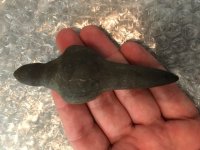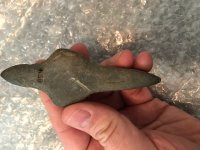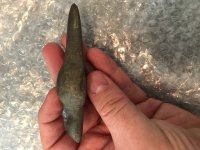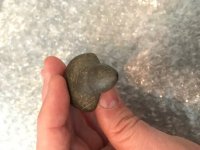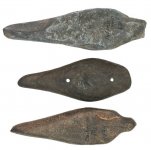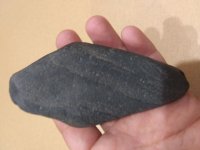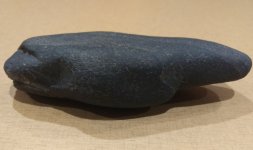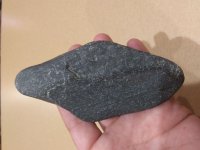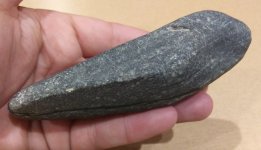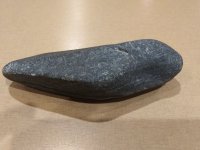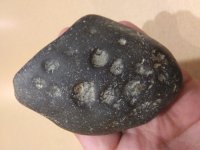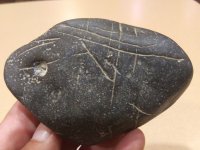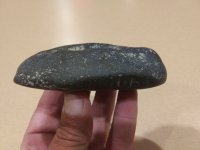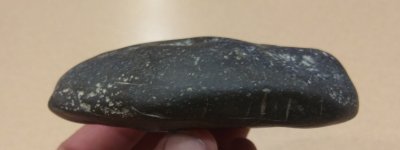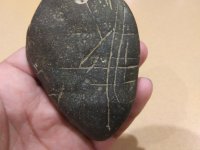joshuaream
Silver Member
Slate Lizards or effigies are a group of stone 'problematicals' found in Ohio and surrounding states. Some of them were probably atlatl weights, some of them are similar to birdstones, some are like flattened plummets, some of them are finely made, and some of them are very crude. Aside from being interesting and quirky, they are one of the more common slate ornamental tools and for many years were fairly reasonable in price if you were looking to add some to your collection.
I have found 3 complete examples over the years and have a couple of broken pieces as well, and have added probably another 20 or so from auctions. Here are a couple of recent additions that will eventually go into that frame. If anyone has any, please feel free to post them. Conjecture about use is also more than welcome.
The first piece isn't very photogenic, but it's really well made. It is pictured in Ohio Slate Types, and in the Archaeological History of Ohio back in 1902. Ex Cameron Parks collection. It is pretty clearly an animal of some type.
I have found 3 complete examples over the years and have a couple of broken pieces as well, and have added probably another 20 or so from auctions. Here are a couple of recent additions that will eventually go into that frame. If anyone has any, please feel free to post them. Conjecture about use is also more than welcome.
The first piece isn't very photogenic, but it's really well made. It is pictured in Ohio Slate Types, and in the Archaeological History of Ohio back in 1902. Ex Cameron Parks collection. It is pretty clearly an animal of some type.
Attachments
Last edited:
Upvote
0


